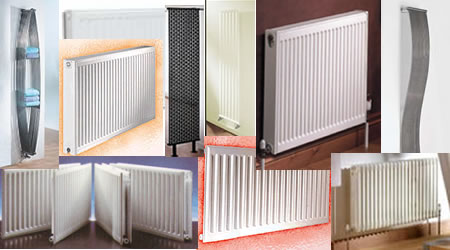“Reliable Family Run (Husband & Wife Formed)”
"Twice recommended by"Time Out" London in 2006"
"Finalist of the Training and Development Barking & Dagenham Business Awards 2008"
"Finalist of the "Best New Business" and " Entrepreneur of the year" Kingston Business Awards 2010"
"Finalist of the "Entrepreneur of the year" Kingston Business Awards 2011

Most households in the UK have mains gas central heating. This is a so-called ‘wet system’ where a gas-fired boiler heats water, which provides central heating via radiators and hot water through the taps in your home.
Some houses that aren’t connected to the gas network use liquid petroleum gas (LPG) or heating oil, which work in a similar way, although LPG and oil are delivered by road and stored in a tank.
Get to know Gas Central Heating Boiler a bit more
A gas heater is a device used to heat a room or outdoor area by burning natural gas or liquefied petroleum gas. Indoor household gas heaters can be broadly categorized in one of two ways: flued or non-flued, or vented and unvented. Gas heaters can be dangerous due both to risk of fire, and to the emissions, particularly in non-flued heaters.
A natural gas heater is a gas powered heating unit used to heat a room, office, and outdoors. The English company Pettit and Smith invented the natural gas heater in 1856. The first natural gas furnace used to work on the principles of the Bunsen burner , that is, by producing a single flame to heat the air locally. This heated air was then circulated over the area by convection.
However, most modern natural gas functions on the radiant method of heating. In this method, the furnace first combines gas and air and then produces flame that ultimately heats up the air. The heated air then spreads over the space.
-----------------------------------------------------
This is how a natural gas heater (gas central heating) (based on the radiant heating method) works:
Step 1
First a thermostat system installed in a natural gas heater senses whether the room temperature has dropped below the desired level. If the room requires heating, the thermostat opens up a gas valve that allows natural gas to enter the heater.
The thermostat is similar to what we use in an air conditioning system. It sets the desired temperature automatically by turning the heater on and/or off according to the temperature variations in the room.
Let's understand step 1 with the help of the following:
Thermostat system (after sensing the room temperature)>> Opens up gas valve >> To let the natural gas enters the heate
-----------------------------------------------------
Step 2
There is an intake duct in a furnace that allows natural gas to enter the furnace. This natural gas comes in contact with the cool air to produce a flame. The cool air comes into the heater from either the top or bottom, depending on where you fix it. The air that has been channeled into the heater runs over the hot tubes and produces hot air.
Let's understand step 1 with the help of the following:
Natural gas enters the heater through a duct >> Combines with cool air (that comes from room) >> Combined air flows over the hot tube >> Hot air is produced
-----------------------------------------------------
Step 3
The hot air now passes through a heat exchanger and thrown out of a vent. The heat exchanger is a device that transfers heat from one medium to another. It also used in electronic devices such air conditioners, refrigerators and so on. Car radiator is also a kind of a heat exchanger. Just as car radiators first heat up cool liquid fuel and water, and then heated air is transferred through the radiator to help in maintaining the produced heat.
Let's understand step 1 with the help of the following:
Hot air passes through a heat exchanger >> Vent throwsout hot air >> hot air spreads out in the room
The working procedure of all furnaces is not same. Permanently installed heaters and Portable heaters are two main types of heaters available in the market. They can be used at home as well as workplace. Let's understand the difference between these two:
Permanently Installed Heater
Ideal for homes and workplaces, permanently installed heater can be fixed anywhere in the basement or a wall. You can easily connect permanently installed heater to your home's gas lines. It comes with a ducting system (also called chimney system) that channels exhausted gases out of home. A natural gas heater works on the same procedure stated. It could have various vents so that warm air reaches every room of your home.
Portable Heater
As the name suggests, portable heaters or floor heaters can be carried anywhere and so they are the best buy for heating small spaces. It emits carbon dioxide and water vapors. This type of heater usually has a fan installed that circulates the heated air properly. Portable heaters are cheap but they need extra care. Poor ventilation can increase the level of carbon dioxide in a room and bring down the oxygen level that could lead to serious health problems. Some furnaces are designed in a manner that they automatically switch off when the oxygen level goes down.
In short, a natural gas heater works by burning the fuel and converting it to heat. As electric heaters are getting expensive, the natural gas heaters are becoming a prime choice of American buyers. Moreover, they are energy-efficient and eco-friendly.
---------------------------------------------------------






